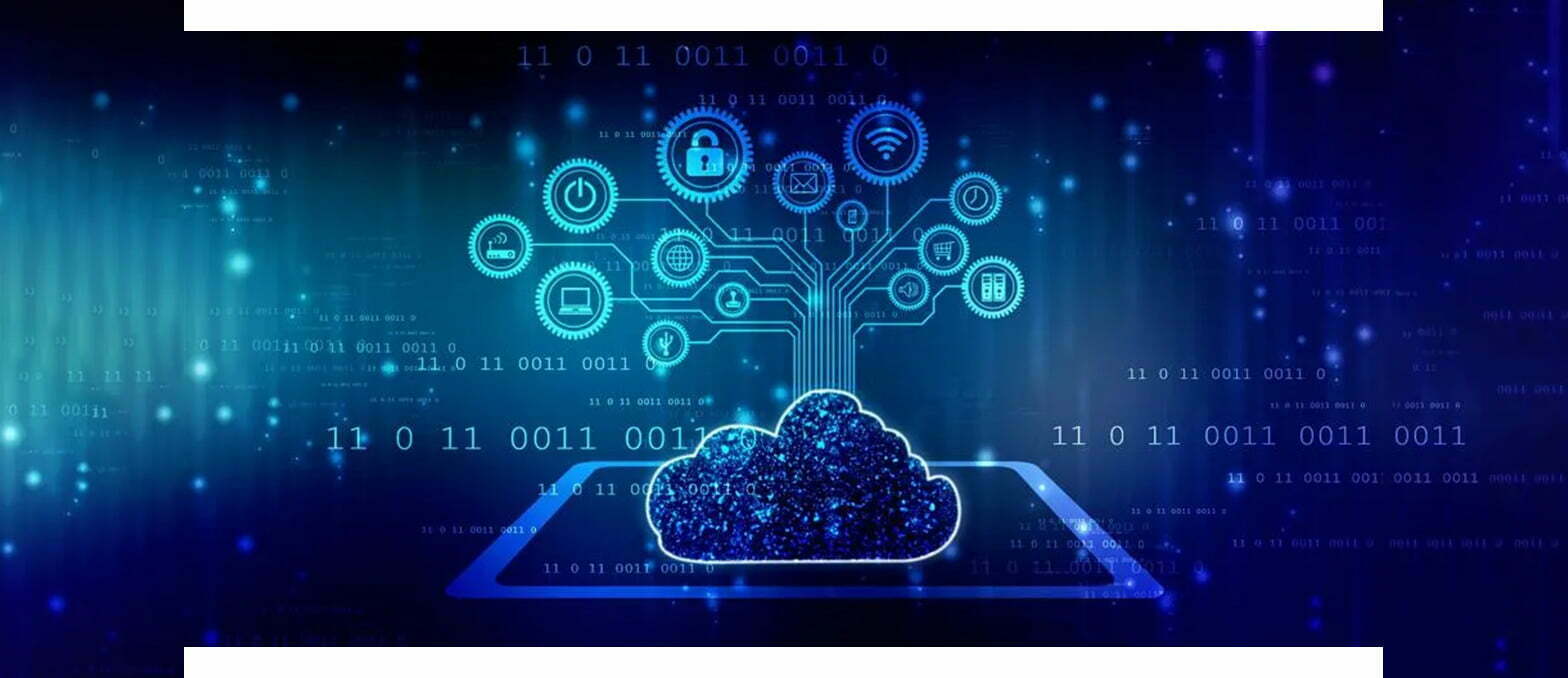Table of Contents
The global health industry as a whole is a siloed, over-burdened maze of overlapping services, infrastructure, and policies. Alongside this are the industries that interweave on professional and specialist levels like public services, education, insurance, and business.
This is where we see the link between existing challenges with health data and business needs in benefit administration software. Globally, countless workers rely on their employer to choose benefit administration software to manage their health insurance benefits. After all this is crucial for all stakeholders in a business. This is because this software is part of access on the employee side. Moreover, it is also part of human resources (HR) organization on the employer side.
Subsequently, these systems handle a colossal range of employee data that, in the 21st century, is sensitive and private. It must be kept properly secure under both law and under cybersecurity best practice. Therefore there is always a need to use the best organizational and security technology. This is because of the desirable outcome that it boosts efficiency and enhances data storage standards.
Right now, one promising technology for this precise purpose is Blockchain. Intriguingly, this technology has many use cases including for managing health data within employee benefits administrative software systems. In this article, we will cover:
- Existing security and data management technology in employee benefits software
- Why is this technology so essential for employee benefits software stakeholders
- How blockchain works to secure data in all software systems
- The major benefits of blockchain in health data security
- The five leading advantages of blockchain in employee benefits software for securing health data
- Future possible developments in health data security for blockchain in employee benefits software

Existing security and data management technology in employee benefits software
Benefit administration domains software is a robust technology. Worldwide, it’s utilized for business operations inclusive of HR, recruitment, payroll, and employee benefits like leave and health insurance. The scale of data managed in these systems is considerable. Importantly, the volume of information handled and the sensitivity of details is extensive. Overall, from key identifying information to bank accounts and employment history, employee benefits software is a leading business tool.
Therefore the type of security and the data management technology required is high level. At present the existing infrastructure standards for benefit administrative systems typically consists of:
- Automation
- Real-time monitoring
- Risk-assessment
- Analysis modules
- Mitigation protocols
- Multiple criteria templates
- Permission-based accessibility
- Record storage for short-term and long-term
- Intuitive features
- Interactive dashboards
- Customizability
- Report generation
Highly secure software systems tend to be engineered to keep data secure through at least one of the following:
- System security — IT infrastructure protects software and hardware systems using cybersecurity to gatekeep access.
- Data storage — Whether the software uses cloud storage or server storage (each has its pros and cons).
- Data access — Accessibility is only possible via certain types of credentials.
- Data encryption — Limits information accessibility via end-to-end encryption to minimize leaks on a small and large scale.

Why is this technology so essential for employee benefits software stakeholders
Within business administration software, data is not always encrypted as it can be time-consuming, complicated, or an oversight. To effectively keep data protected, it needs to be secured. In 2025, for businesses to protect all stakeholders they need to be using a system that encrypts their data. Importantly, this includes employee data and external stakeholder data.
Cyberattacks across industries are on the rise based on the fact that, “As businesses store more of their and their customers’ data online, they are becoming increasingly vulnerable to cyber thieves,” say the Investopedia team. Furthermore, recent statistics from Statista show that cyber incidents are the equal first leading risk to businesses worldwide. Additionally the average cost of a data breach in the U.S. in 2022 nearly $9.5 million USD. Statista also projects that cybercrime will have a projected global cost of $23.84 trillion USD by 2027.
Protecting benefit administration software data means keeps employee data secure. This encompasses wide-reaching data types that many people may not consider:
- Hiring information — Inclusive of police checks and copies of qualification documents
- Health information — Inclusive of medical certificates and insurance claims
- Identifying information — Inclusive of bank accounts, home address, and family names. This can include details of dependents or partners linked on a benefits package
Without question, the risk to internal employee stakeholders is high. We must consider how fundamental business administration software is to HR and management running operations. After all, there is a risk of external stakeholder data being breached. From here, this can ruin or taint a brand, result in lawsuits, and contravene regional data protection and privacy laws.

How blockchain works to secure data in all software systems
Blockchain is a key technology of the 21st century. Moreover, its development led to other technology developing. It was first described in 1991 by technology experts over three decades ago. Then its mainstream use generally traces to the pioneering 2008 white paper Satoshi Nakamoto, the developer of Bitcoin, authored about the digital cryptocurrency. Bitcoin transactions are verified and publicly available on the blockchain ledger. From here, the use of this cryptography in Bitcoin led to the normalization of blockchain technology as we know it.
The highest standard of data protection is now central to 21st century business. This is, very understandably, in consideration of these core aspects of breach impact:
- Legal implications
- Fiduciary costs of breaches
- Security risks posed to individual and collective
- Damage to business integrity and brand
Raising the standard of data security may well be possible with the mainstream integration of blockchain technology. Comparitively, this security technology is different to other options listed due to the powerful standard of encryption.
Blockchain uses complex end-to-end encryption that:
- Eliminates criminal anonymity — As identity is verified to access data via security keys
- Upholds privacy — Through the public record of transactions that is transparent across the blockchain
- Makes data tamper-proof — Based on the chain of digital blocks containing records
- Decentralizes data — Making it harder to attack as the network data is distributed, continually updated, and kept in sync
- Verifies data — Resulting in high data integrity through consensus-based changes that must be agreed on by the authorized users
On a technical level, data is encrypted on the blockchain through two types of cryptographic algorithms:
- Asymmetric-key algorithms
- Hash functions
The encryption and hashing of data via these classes of cryptographic algorithms is what facilitates high-level security on the blockchain. Even so, the technical security of blockchain in business software systems can only be maintained with the right supporting components. This is the overall operational network having an exceptionally secure, best practice infrastructure. At the end of the day, the secure infrastructure is especially essential to business administration software due to the scope and volume of data handled.
Using public versus private blockchain in business systems like employee benefits administrative software
For businesses, there is a key variation between the public blockchain and the private blockchain. The now commonplace cryptocurrencies like Bitcoin and Ethereum exist on the public blockchain. On the other hand, businesses tend to operate on their own private data blockchain management. This is more suited to business based on access. Crucially, access is restricted to only those users who have appropriate access credentials and permissions. It is important to note that the blockchain relies on infrastructure for security: the deployment platform and overall network must have the highest level of security. For this to be effective, the infrastructure must be able to: prevent unauthorized access, block bad actors, and keep encryption keys securely guarded. Private blockchain isn’t decentralized in the same way as public blockchains. Nevertheless using encryption principles and technology could be a way forward to make this effective in employee benefits software.
Examples of how this is currently working in other software systems for enhanced data security:
1. Media and entertainment
Blockchain is being used to reduce costs in this industry. Management and distribution of premium video is made possible using the blockchain technology features. It is is fast and reliable with no need for a core central network. Eluvio Content Fabric, launched in 2019, is an early adopter in the space. Intriguingly, it has been acquired by MGM Studios, a 99-year-old media studio, for their web, mobile, and TV streaming.
2. Banking
Many banks are already using blockchain to secure international payments. In 2018, Banco Santander launched, Santander One Pay FX, the world’s first blockchain money transfer service. Invaluably, this creates more security, removes intermediaries, and is tailored to a wider customer base.
3. Insurance
Blockchain is a solution to a security weak spot of the industry: contracts. Encrypted contract sharing is possible now through smart contracts. The IBM Blockchain Platform is being used across industries already. The openIDL American Association of Insurance Services network platform is a strong example. Currently this insurance product, built using the IBM platform, is used for automating regulatory reporting and streamlining compliance.

The major benefits of blockchain in health data security
There is extensive scope for how blockchain will influence the broad-reaching umbrella of health. Chiefly this includes healthcare and health services, non-health industry data, and individual health records. From here the scope of this multifaceted, wide-reaching industry in the business realm is priceless.
Benefit one: All health data is secured
The overarching benefit that has a qualitative value is how blockchain keeps data encrypted and henceforth truly private. The value of blockchain is that all records are encrypted irrespective of whether it handles individual or collective health data. This comprehensively maintains privacy and a resilient front against cyberattacks or data breaches (whether by cybercriminals or user error). All stakeholder interests are covered and the standard of data security can be sustained.
Benefit two: Health technology developments integrated
Technical capabilities continually progress in this field. One area that shows the real-world impact is medical health devices. This is tied to the distribution of specialized connected medical devices and securely linking these smart health devices to individual health records. Blockchain has the infrastructure to integrate with these devices and can then be augmented with these systems securely. In time, health records can be encrypted and shared from devices. Similarly, medical practitioners or services, can then access without any risk of breaches or data silos.
Benefit three: Services infrastructure is secure, less siloed and widely accessible
Health data on the can be accessed widely due to decentralization. Security is consistently maintained through encryption and access keys. Giving users their access keys means they can present these to access them in any scenario — work or private. This applies to medical services settings, too. Provided users have their identification and access keys they will have no issues with records. The same applies for distributing information between medical institutions, insurers, and governments. Administrative and clinical staff can have restricted access to records for task-based use. For example, in order to complete notes or to review patient files before an appointment. Any other time they have no access and the data is encrypted on the blockchain. Patients don’t need to worry about files getting lost or stuck between different locations. They can use their access key to decrypt their personal data ledger when they attend appointments or request treatment.

The five leading advantages of blockchain in employee benefits software for securing health data
For any business, regardless of the industry, benefit administrative systems are used organization-wide for the full scope of employee services. If blockchain is used for data management in benefits management software then secure record-keeping standards can be raised. As we have explained, securely managing staff records, namely identifying health data, is an imperative function of employee benefits software. The distributed ledger system of blockchain with its encrypted data blocks has three key benefits:
- Tampering of employee benefits software is prevented
- Easy accessibility for authorized HR staff and individual users is maintained
- Trustworthiness of the benefit administrative systems in place is enhanced
In this section, we’ll cover the five technical security advantages of blockchain in health employee benefits software:
-
Decentralization of data
-
Accessible for users without concern
-
Better organized for user and team benefits
-
Greater cybersecurity practices
-
Consistent, accurate file maintenance
1. Decentralization of data
Employee health data in employee benefits software comprises a significant volume of personal employee information. Decentralization of the distributed blockchain ledger is a key advantage. It’s much more difficult for unauthorized users to gain access to benefit administrative system databases. The restriction and control of access is based on the blocks of data that are highly encrypted. Access cannot happen through force as the authorized key is required to decrypt data. It’s much more difficult for criminals to mount an attack on a decentralized blockchain system; it’s harder to hack or even compromise an employee who might otherwise have general access to the database. Accessing and making changes to the employee health data, no matter where or when, is recorded across the blockchain. This means that no individual can have their records tampered with or exposed without their consent.
2. Accessible for users without concern
Accessibility is another issue in data security. Access to employee health data is more streamlined with a blockchain due to the nature of encryption. Highly sensitive health data is effectively secured with this technology. The key provided to each employee for their records and the key provided to each HR team member restricts organization-wide accessibility. Reducing access to just the person whose data it is and the HR administrators minimizes risk and creates mutual accountability between the parties. The blockchain automatically and transparently registers data access information and any changes to data. This in turn lowers tampering risk that protects the employee as well as the organization. Accessibility also supports employees who might have concerns around the nature of their data. Privacy preferences around health data and their use of employee benefits might be particularly sensitive. The privacy upsides of the blockchain for kind of health data are therefore considerable.
3. Better organized for user and team benefits
Databases, even with the most technically-robust software, can get messy and security is overcome. Blockchain logically organizes records so the health data contained in employee benefits software system is better uses. This has enhanced outcomes for employees, HR staff, and management. The health offerings available to employees in their benefits agreement need to be clearly conveyed and easy to comprehend. This achieves the best results in access, returns, and the employee’s sense of satisfaction. All of these results are part of building a positive, engaged workplace team. Disappointment amongst employees can happen if they feel that their employer isn’t invested in them receiving their entitlements. Using blockchain, there is an employee experience benefit. Information access is in the hands of the employee via their key. Equally, they have a user-oriented structure that smoothly presents, and maintains, their data.
4. Greater cybersecurity practices
Cybersecurity is, more than anything, the number one threat to businesses. A breach of any employee’s data can be disastrous. Any personal data, let alone private health data, could cause qualitative and quantitative, wide-reaching damage. The structural security of blockchain has an invaluable duality for businesses. Firstly, the decentralization of the blockchain makes it more difficult for cybercriminals to gain access by force to records. Secondly, the encryption technology limits access to records in a way that is not consistent with standard password-based credentials; even biometrics can be stolen and used for unathorized access. These two structural features of the blockchain work to both maintain security and transparency of access. They can also deter any attempts at breaching data or creating “open windows” for data leaks. Overall, this protects employees as their health data and benefits access records can’t be compromised through user error, cyberattacks, and poor password hygiene.
5. Consistent, accurate file maintenance
The technical structure of data storage on the blockchain is a security advantage as well. There is evidence every time a change is made on the blockchain in any setting. Changes are timestamped and publicly available to all other users. This audit trail feature improves the standards of file maintenance. Any problems can be tracked while an attack or attempted breach of data is documented, too. Even low levels of error can cause damage and security issues in the long-term. This problems worsens if mistakes are consistent with common operating practices across the employee benefits software system. Finally, it reduces the risk of issues with employee health data records. As a deterrent, access is based on having the right key and all activity is stamped on the blockchain. With blockchain, health data is properly administrated and the number of authorized access points for changes are very limited. Overall, the points of potential risk are thus lowered for employees and employers.

Future possible developments in health data security for blockchain in employee benefits software
Health data security is of the highest priority for all businesses. Legally and ethically, securely managing employee health data in employee benefits software is part of good business. The possibility for even greater health security with blockchain is profound. In time, as this blockchain technology use is more widespread and the software integrating it develops further then it may be realized.
These possible improvements may develop as the following in employee benefits software:
- Reduced risk in data breaches — Important as we see the rise in the weaponization of private data, especially health records. Attacks can be deterred if there is a standard of blockchain security in place. This could happen for any and all health data storage including employee benefits software. The potential is considerable. The structural systems that already work as an access and record deterrent in data breaches may create widespread change.
- Better access for providers — Reducing the complexity of accessing services may be possible as health data storage is more secure and more sophisticated. This in turn may improve how people think about their health. Better systems for utilizing their health benefits due to the user-oriented employee benefits software is very attractive. Beyond this, the scope for integration with practitioners may also improve how employee benefits software is used. Employees can confidently access their health data with a medical service. Blockchain infrastructure directly communicates this to their employer as per the employee benefits software.
- Improved planning — Simplification of processes also improves security as it reduces the margin of user error. From here, businesses and employees can plan how they manage their health options. For employees, it might be specialist health perks or bringing in dependents to a professional health insurance plan.
Conclusion
With the right systems — including blockchain —there is major scope for change that positively affects stakeholders. Businesses, employees, the developers of employee benefits software, health practitioners and providers, and even governments can benefit. Keeping data secure and having system fidelity is of benefits everyone, in all scenarios and at all times. As a result, it’s not just an employee or business who is taken care of.
The proof of concept of keeping private health data secure on the blockchain extends far beyond an organization. In fact, using blockchain in employee benefits software extends to the entire world and its systems for healthcare. In the Harvard Business Review, Don Tapscott and Alex Tapscott write in general terms about health data security using blockchain. The authors say that, “What we’re shooting for is a wholesale shift in how we define and assign ownership of data assets and how we establish, manage, and protect our identities in a digital world.” This outlook suggests that the future is innovatively using technology to improve collective wellbeing and protecting everyone’s data and identity. The use case of blockchain in employee benefits software indicates that it’s possible with this technology. Ultimately, this is provided we use this asset for security and progress rather than a set-and-forget systemic solution.
Frequently Asked Questions (FAQs)
What kind of user and employee data is contained in Employee Benefits Software?
Employee Benefits Software, also referred to as Benefits Administration Software Solutions, are a ‘Platform-As-A-Service’ (PaaS) technology that streamlines business operations.
The range of user, or employee, data for organizations is extensive. This is because employee benefits software is designed to be used an ergonomic tool for organizations. The use is across their human resources (HR), operational, and employee processes and systems.
The data the software contains consists of:
- Employee information
- Recruitment information
- Training
- Payroll
- Benefits including leave entitlements and sick pay
- Health insurance
- Legal frameworks and compliance
- Third-party contracting
- Attendance management
- Rostering and shift management
- Team performance data
This data may vary according to:
- The operational needs of a business
- How the organization is growing and scaling
- The type of industry the business is operating in
What security options exist with Employee Benefits Software?
Employee Benefits Software is characterized as a high-level PaaS technology. It is designed for the needs of each business that will be using a product like this.
Security is a cornerstone of any 21st century business and its operations. Employee benefits software typically has in-built security features, inclusive of strong user access credentials management. These features keep system integrity for high volumes of sensitive data. The software is also cloud-based which lowers the risk of localized cyberattacks and unforeseen disasters or accidents.
How does this platform-as-a-service Employee Benefits Software technology help support a business cybersecurity policy?
This PaaS employee benefits software technology is designed to be integrated with existing cybersecurity policies and systems.
By design, employee benefits software will perform with any cybersecurity policy as it operates on principles of:
- Data security
- User credentials security
- Streamlining and securing records
- Consolidating business operations
- Simplifying access and enhancing user experience to minimize errors
- Centring core information in processes
- Improved time management
- Improved resource management
- Enhanced flexibility in business operations
- Customizability
- Confidentiality
Employee benefits software is designed for organisation-specific implementation. The cybersecurity policy, technology, and tools in place will be accounted for and integrated into the deployment of the PaaS. Throughout the product development, set-up, and post-deployment day-to-day, support is available with the employee benefits software. Invaluably, this ensures all operational features and functions are successful while maintaining security for the organization and all user data.





